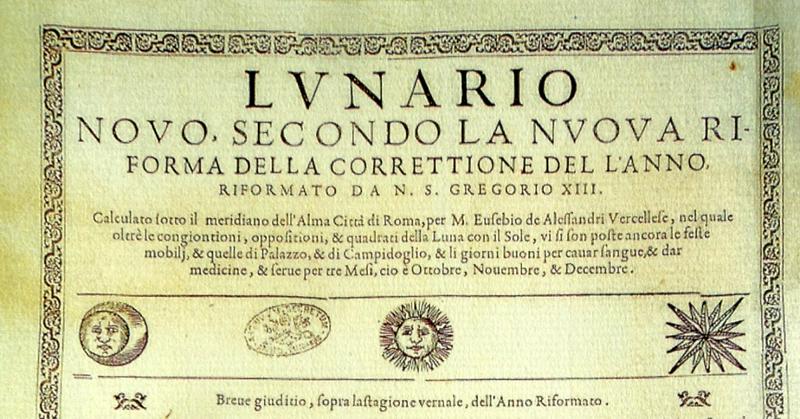The Gregorian Calendar: Why Are The Months And Days The Way They Are?
By | December 25, 2020

January 1 marks the start of a new year, at least according to the Gregorian calendar. We've been using this calendar system for more than 400 years, ever since Pope Gregory XIII set up a system to correct the errors in Julius Caesar's previous calendar system. The switch from the Julian to Gregorian was not without its hiccups, however, and even today, not all parts of the world count their days by it.
The Julian Calendar
Humanity has used numerous different systems for tracking the days, but around 40 B.C.E., an astronomer named Sosigenes collaborated with Roman Emperor Julius Caesar to develop a revolutionary new calendar. See what we did there? Because years are measured by revolutions around the Sun? Get it?
Anyway, Sosigenes and Caesar divided the year, which Sosigenes had calculated at 365.25 days, into 12 months, but they were off by 11 minutes and 14 seconds per year. By the 1500s, those 11 minutes and 14 seconds had added up, and the calendar had become out of sync with the solar year. The solstices and equinoxes were all off, which meant that important religious days, most importantly Easter, were also out of whack.

The Gregorian Calendar
This was such a big problem that Pope Gregory XIII reformed the calendar in 1582. Five years earlier, he tasked two of the greatest minds of the time, astronomer Christopher Clavius and physician Aloysius Lilius, to observe the movement of the Earth around the Sun and calculate the best division of days. On October 4, 1582, Pope Gregory issued a papal decree to introduce his new calendar system, which essentially boiled down to erasing 10 days. They just skipped straight to October 15 the next day; October 5 through 14 simply never happened that year.
There was still one problem, however. The orbit of the Earth around the Sun had been calculated more precisely to 365.24219 days, and rounding things off is what got them into this mess in the first place, so something had to be done about the remainder. You might recognize this as the origin story of Leap Day, but you probably don't know about the Leap Second. Not even an additional day at the end of February every four years was sufficient to correct the calendar, so they had to walk it back and remove Leap Day on centennial years that can't be divided by 400. For example, there was a Leap Year in 2000, but not in 1900, 1800, or 1700. It might sound convoluted, but it adds the extra second necessary to ensure that Easter doesn't end up in October.
As part of Pope Gregory's reform of the calendar, the first day of the year was changed as well. Before, it was celebrated on the Feast of the Annunciation, also called Lady Day because it corresponded to a feast celebrating the Virgin Mary, which fell on March 25. For a brief time during the Middle Ages, the first day of the new year was celebrated on Christmas Day, but Pope Gregory did away with all that nonsense and decreed it was January 1.

Not Everyone On Board
There's no question that the Gregorian calendar is more accurate than its predecessor, but it became a strangely political hot-button issue. Because it was decreed by a pope, it was immediately accepted by Catholic countries like Italy and Spain, but other European nations initially suspected the calendar was some kind of devious plot by the Catholic Church to do ... something. As a result, Germany didn't make the change until 1700, and it took Great Britain and the United States another 52 years. Benjamin Franklin even quipped about the loss of the extra 11 days, which was from September 3–14 of that year for Britain and America, "It is pleasant for an old man to be able to go to bed on September 2 and not have to get up until September 14."
These days, almost every country follows the Gregorian calendar, with a few notable exceptions. While most of the world welcomes the new year on January 1, Iran celebrates on March 20, India on April 8, and China, Korea, and Vietnam on February 8. The Jewish New Year falls between October 2 and 4.

